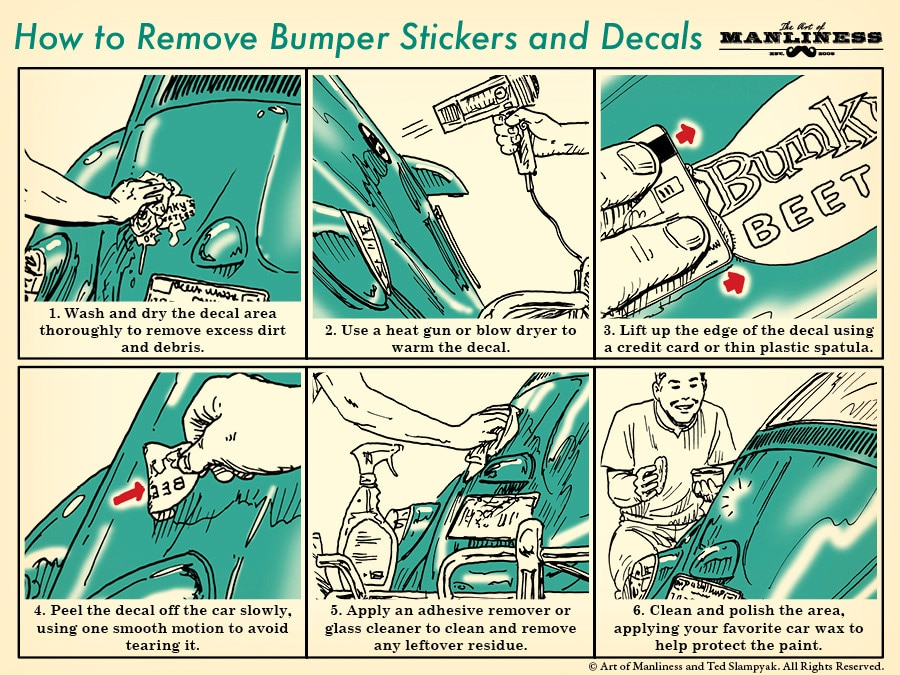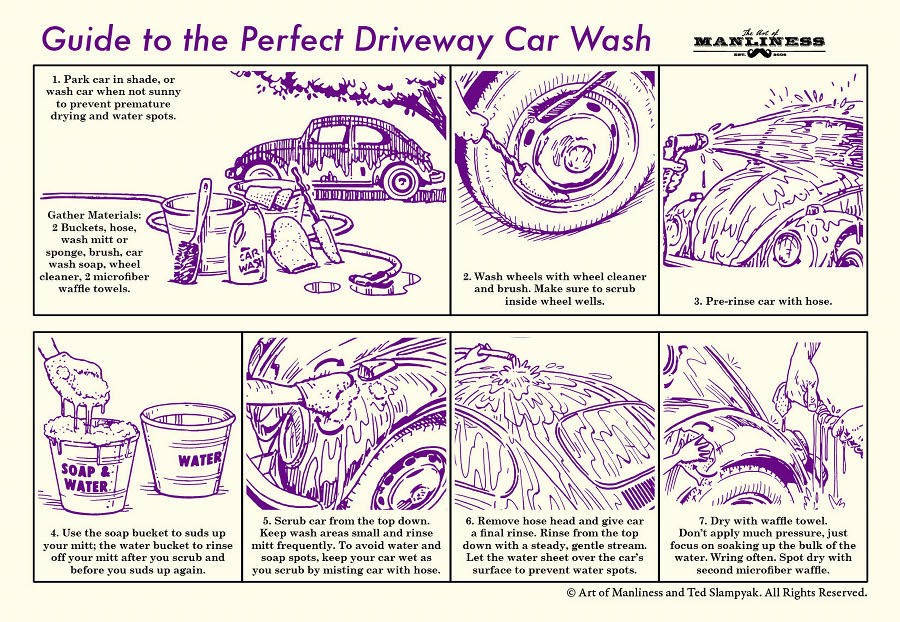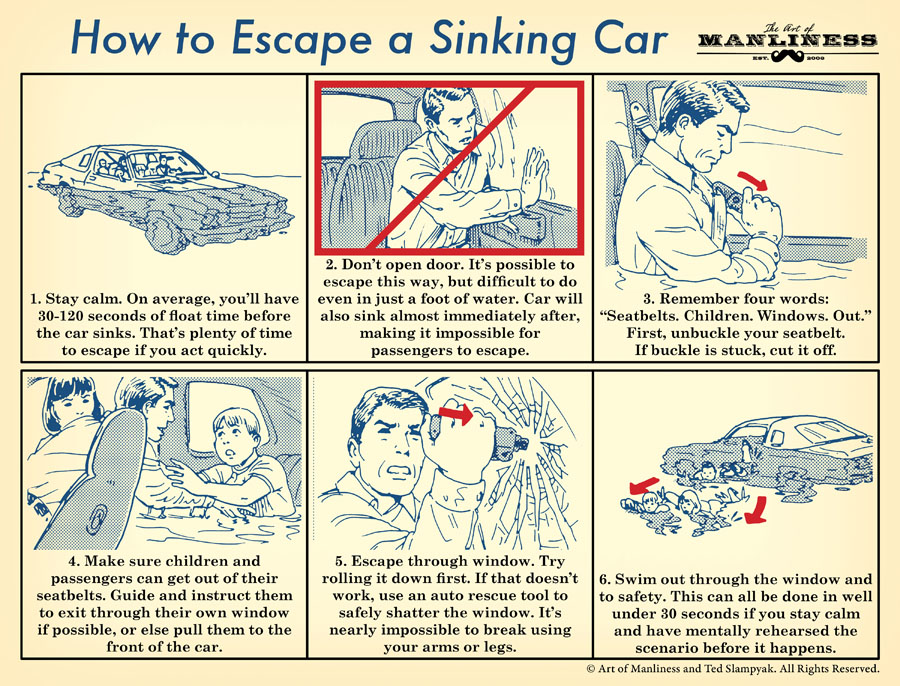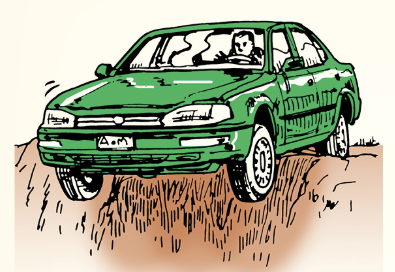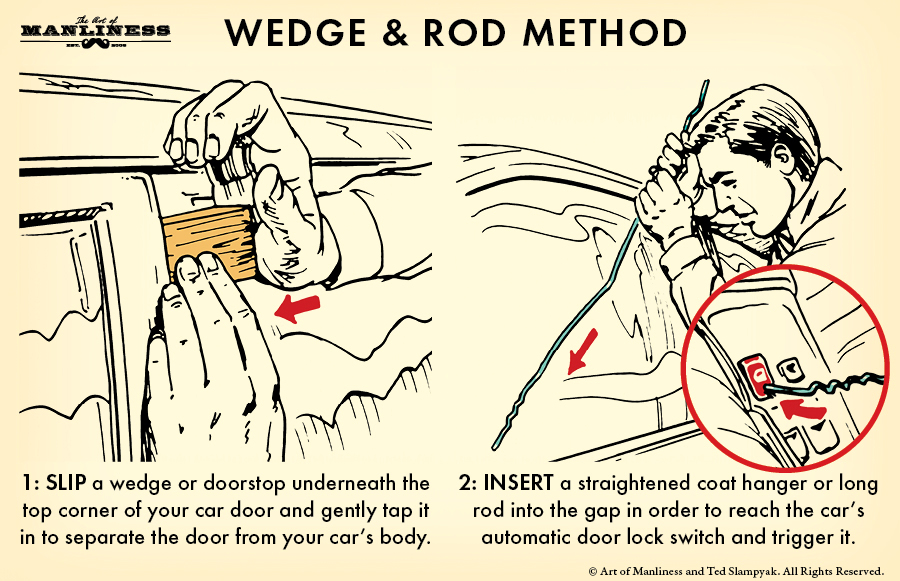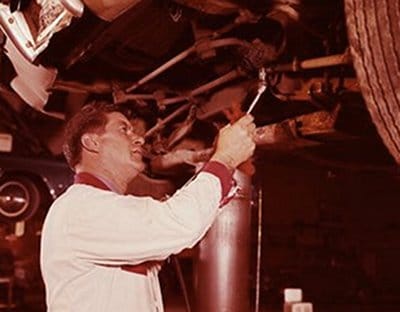
It’s happened to all of us. You walk into the garage to get into your car and see a puddle of something sitting under it. “Hmmm, what’s that?” you wonder. “Is it something serious? Will my car blow up on the way to Subway?”
Just as your body is filled with fluids that allow it to function properly, your car has a variety of liquids pumping through it that allow it to run at its best. And just as your body springs a few leaks from time to time, so too does your car (although it doesn’t have the option of wearing an adult diaper at its disposal).
Knowing how to identify that mysterious puddle under your car can help prevent small mechanical problems from turning into a $2,000 mechanic’s bill. So to learn how to decipher one leak from another, I visited KwikCar in Tulsa and talked with their mechanics.
Below we take a look at the most common car leaks and explain what they mean and whether or not you’ll die in a fireball before getting to eat your Cold Cut Trio.
Coolant (Antifreeze)
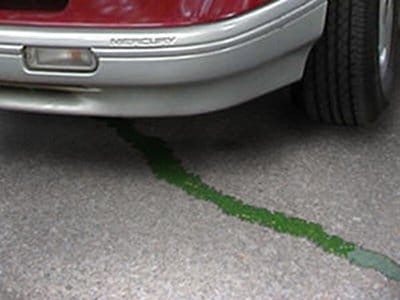
Coolant (or antifreeze) usually has a greenish color. Sometimes it’s bright orange or pink. But usually it’s green. It has a bit of a sticky, viscous feel to it.
Antifreeze is one of the most common leaks on cars. It’s not a serious leak to have, but you should get it fixed as soon as possible. Coolant regulates the temperature in your engine. Left unchecked, a coolant leak can lead to your engine overheating and your car dying on the side of the road. And let me tell you, there’s nothing worse than being stranded on the side of the road with an overheated car when it’s 105 degrees outside. Trust me.
Another reason to get coolant leaks fixed as soon as possible is because the stuff is extremely toxic to pets. Unfortunately, coolant has sort of a sweet smell and taste which makes it attractive to Mittens the family kitty (and to murderers who mix it into their victim’s drink). Unless you want to explain to the kiddos why Mittens had to go to a special “cat farm” where she can frolic with other fun-loving animals, get the leak fixed as soon as you can. Places to check for coolant leaks are the radiator, radiator hoses, heater hoses, and engine core plugs.
Gasoline
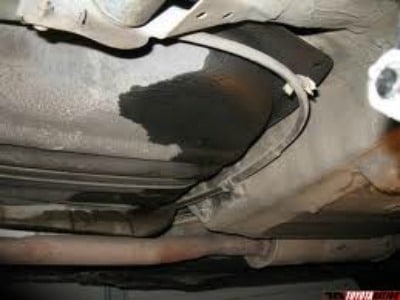
Leaking gas tank
Gas leaks are easy to identify. Does the puddle in your garage smell like gas? Yes? Okay, it’s probably gas.
Don’t worry. Just because you have a gas leak, doesn’t mean your car is about to blow up. In fact, some people drive around with gas leaks for months without having any problems. With gas prices as they are, the biggest risk is dribbling out nickels and dimes all over town. But don’t get me wrong. Fire and blowing-up-action-movie-style is still a risk with fuel leaks, so it’s important to get them taken care of immediately.
If you have a puddle of gas near the rear of the car, it probably means you have a leaky gas tank. (Minor gas tank leaks are actually pretty easy to repair on your own. Perhaps we’ll write something up about it in the future.) If the puddle is near the front, something’s probably wrong with the fuel pump. Also check the fuel lines for the source of the leak.
Oil

Another common fluid to drip from your car is good ol’ engine oil. If your car leaks oil in drips while your car is parked and leaves a puddle on your garage’s floor, take it into a mechanic and get it fixed ASAP. An oil leak can adversely affect oil levels in your car, and if left unchecked, can cause engine damage.
New oil has a yellowish brown color; older oil looks dark brown or black.
An oil leak can come from a variety of sources, including, but not limited to:
- bad or worn oil gasket
- oil filter not attached correctly
- oil coolant line corroded
- oil plug not secured properly
- high oil pressure
Brake Fluid
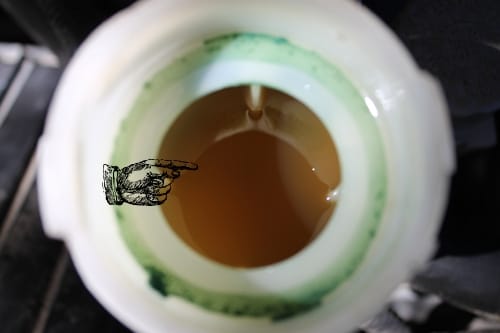
Brake fluid is clear to yellowish in color and has a medium thickness and a slightly oily feel. If you see a puddle of liquid with these properties under your car, have your car towed to a mechanic immediately. Get your car towed even if you just suspect you’re leaking brake fluid. Don’t even try to drive your car over there.
Here’s why: Your car’s brake system works on a hydraulic pressure system. Brake fluid serves as the hydraulic fluid that maintains that pressure. A leak in brake fluid will cause a drop in pressure, possibly resulting in brake failure. That’s not something you want to happen as you’re cruising down Dead Man’s Hill going 60 MPH.
Fortunately, in most modern cars, brake fluid leaks are rare. If you do have one, you’ll usually find it near the wheels or in the area directly under the brake pedal.
Automatic Transmission Fluid

Automatic transmission fluid has sort of a light red color when it’s new and a dark red or brownish color when it’s old. It’s thick and has an almost oil-like feel. (Some manual transmission cars use transmission fluid, but most use gear oil.)
Transmission fluid serves as a lubricant in you car’s transmission so that your car shifts gears smoothly and correctly. The fluid also serves as a coolant in the transmission. If your car gets low on transmission fluid, you run the risk of grinding or burning your transmission to destruction. Replacing a transmission can run you $1,300 to $1,800, depending on the car. So getting leaks fixed is definitely worth the investment.
Look for transmission fluid leaks near the front or middle of the car, particularly near the transmission filler tube, near the transmission fluid drain hole, at the selector shaft (it’s the rod that connects your gear shift to your transmission), and between the transmission and engine.
Power Steering Fluid
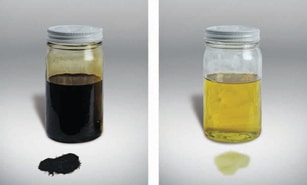
Old power steering fluid on left; new on right
Power steering makes turning your car a breeze. Without it, you have to put some muscle into turning the steering wheel. I’ve only driven a car without power steering once in my life, and boy did it make me grateful for the engineers who came up with the marvel of power steering.
Most power steering systems work using hydraulics. As you turn the wheel, power steering fluid fills a cylinder in your steering’s system, which in turn applies a force to the wheels to help you turn. A drop in your power steering fluid level means a drop in your power steering system’s pressure, which of course means turning your car will be more laborious.
Many cars actually use automatic transmission fluid as the power steering fluid. So if you notice a reddish stain on your garage floor and your car has been a little more difficult to steer, chances are you have a power steering leak.
Other cars use a power steering fluid specifically designed for power steering systems. It’s slightly yellowish and has a medium thickness.
Check your owner’s manual to find out what your car uses for power steering fluid.
Your car’s steering system is towards the front of the car, so you’ll find evidence of power steering leaks there. Possible sources for a power steering leak include the power steering reservoir, power steering pump, and hoses connecting the power steering system.
Windshield Washer Solvent
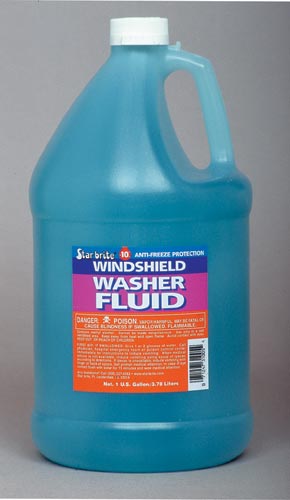
Windshield wiper fluid is usually blue, but sometimes green or orange. It’s really thin and feels almost like water. Check the windshield wiper fluid reservoir and the tubes that carry fluid for any leaks. This isn’t a serious leak. It only becomes a problem after you drive through a plague of locusts, and their guts get splattered all over your windshield.
Water
It’s blistering hot and you’ve had the car’s A/C running full blast all day. As you leave the barber shop and walk towards your car, you notice a steady drip of liquid coming from your car’s underside.
You shake your fist in the air and scream towards the heavens: “Great Odin’s Raven! My car is doomed! Dooooomed!”
Step back from the edge of despair, sir. You’re not doomed.
The mechanic I spoke with mentioned that the leak most people freak out about isn’t actually a leak. It’s just water condensation from the air conditioner. Nothing to worry about here. Quit shaking your fist and run it smoothly through your freshly cut hair. Nobody saw anything.
Any other tips on identifying car leaks? Share them with us in the comments.
Tags: Cars


